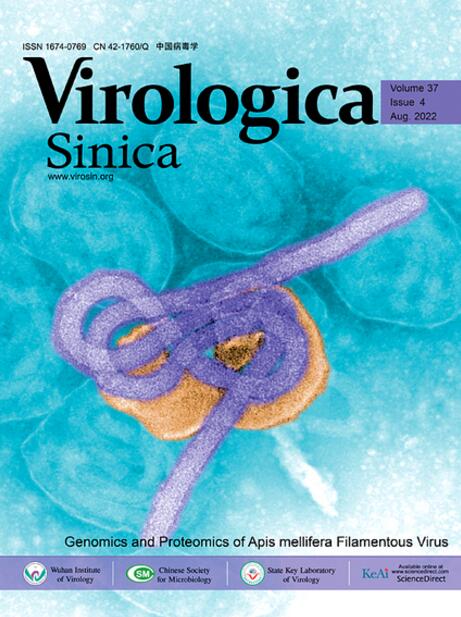Virus profiling of bronchoalveolar lavage fluid in hospitalized non-COVID-19 adult patients with pulmonary infection from November 2020 to November 2021
IF 4
3区 医学
Q1 Medicine
引用次数: 0
Abstract
Identifying the cause of respiratory tract infections is important for reducing the burden of diagnosis and treatment. To assess viral etiologies of hospitalized patients with pulmonary infection, bronchoalveolar lavage fluid (BALF) specimens were collected from non-COVID-19 adult patients (n = 333, including patients with lower respiratory tract infection, tuberculosis, lung cancer, and pulmonary nodules) between November 2020 and November 2021. Multiple common respiratory pathogens were detected using multiplex reverse-transcription polymerase chain reaction. The result showed that at least one virus was identified in 35.44% (118/333) of the cases. Among these, influenza virus was the most commonly identified, followed by the parainfluenza virus, coronavirus, human rhinoviruses, and human respiratory syncytial viruses. The tuberculosis group demonstrated the highest viral detection rate, yet paradoxically exhibited the lowest co-infection rate. In contrast, the highest co-infection frequency was observed in the pulmonary nodules group. Patients with viral infections exhibited more severe clinical symptoms compared to those without detected viral infections. However, this observation was only noted in the lower respiratory tract infection group among the different disease groups. Notably, among patients infected with a specific virus, there were no significant differences in viral load between single and co-infections. Our study identified the major causative agents in hospitalized adult patients with pulmonary infection, offering insights for precise disease diagnosis and the prevention of unnecessary use of antimicrobial drugs.
2020年11月至2021年11月住院非covid -19成人肺部感染患者支气管肺泡灌洗液病毒谱分析
确定呼吸道感染的病因对于减轻诊断和治疗负担非常重要。为了评估住院肺部感染患者(包括下呼吸道感染、结核病、肺癌和肺结节患者)的病毒病因,我们收集了2020年11月至2021年11月期间非covid -19成年患者(n = 333)的支气管肺泡灌洗液(BALF)标本。采用多重逆转录聚合酶链反应检测多种常见呼吸道病原体。结果显示,35.44%(118/333)的病例至少检出一种病毒。其中,最常见的是流感病毒,其次是副流感病毒、冠状病毒、人鼻病毒和人呼吸道合胞病毒。结核病组表现出最高的病毒检出率,但矛盾的是表现出最低的合并感染率。相比之下,合并感染频率最高的是肺结节组。与未检测到病毒感染的患者相比,病毒感染患者表现出更严重的临床症状。然而,在不同的疾病组中,这一观察结果仅在下呼吸道感染组中被注意到。值得注意的是,在感染特定病毒的患者中,单次感染和合并感染之间的病毒载量没有显著差异。我们的研究确定了住院成人肺部感染患者的主要病原体,为精确诊断疾病和预防不必要使用抗菌药物提供了见解。
本文章由计算机程序翻译,如有差异,请以英文原文为准。
求助全文
约1分钟内获得全文
求助全文
来源期刊

Virologica Sinica
Biochemistry, Genetics and Molecular Biology-Molecular Medicine
CiteScore
7.70
自引率
1.80%
发文量
3149
期刊介绍:
Virologica Sinica is an international journal which aims at presenting the cutting-edge research on viruses all over the world. The journal publishes peer-reviewed original research articles, reviews, and letters to the editor, to encompass the latest developments in all branches of virology, including research on animal, plant and microbe viruses. The journal welcomes articles on virus discovery and characterization, viral epidemiology, viral pathogenesis, virus-host interaction, vaccine development, antiviral agents and therapies, and virus related bio-techniques. Virologica Sinica, the official journal of Chinese Society for Microbiology, will serve as a platform for the communication and exchange of academic information and ideas in an international context.
Electronic ISSN: 1995-820X; Print ISSN: 1674-0769
 求助内容:
求助内容: 应助结果提醒方式:
应助结果提醒方式:


